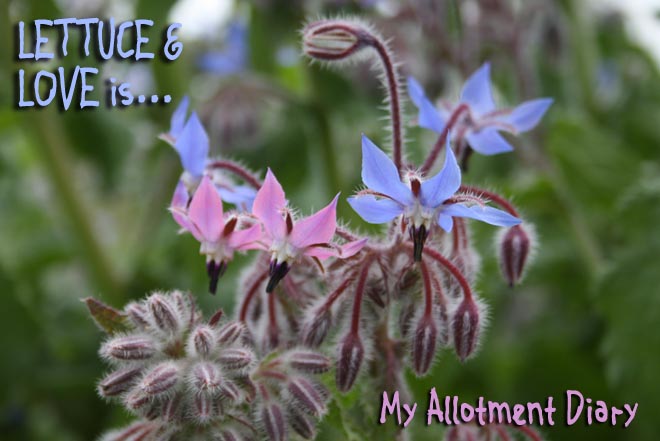Sunday, 26 July 2009
Allotment First Aid and a little love...
Thursday, 23 July 2009
What to do with all those courgettes: #3 Hugh's Glutney
Hugh says: This is a ‘multiple choice’ recipe for chutney, designed to help you use whatever seasonal fruit and vegetables are in full glut at the time. For me, the courgettes/overgrown marrows are pretty much a staple in August and September, and they may give way to pumpkins and squashes in October and November. Tomatoes and plums are around at roughly the same time, though the tomatoes will start early – particularly if you use green ones.
Of course, no two batches of glutney will ever be quite the same – but that hardly matters. You should also feel free to play fast and loose with the spice bag. And if you like a really hot chutney, add as much dried chilli as you dare.
Serve with cheese, cold meats, terrines, pork pies etc. But also remember what a useful ingredient chutney is, with a ready-mixed blend of sweet, sour and spice. I frequently add it to curries, soups and stews.
To make about 10 jam jars’ worth:
1kg marrows/overgrown courgettes, unpeeled but cut into dice no bigger than 1cm (discard seeds from really large marrows) OR 1kg pumpkin, peeled, seeds and soft fibres discarded, and diced no bigger than 1cm
1kg red or green tomatoes, scalded, skinned and roughly chopped OR 1kg plums, stoned and chopped
1kg cooking or eating apples, peeled and diced
500g onions, peeled and diced
500g sultanas or raisins
500g light brown sugar
750ml white wine or cider vinegar, made up to 1 litre with water
1–3 tsp dried chilli flakes
1 tsp salt
for the spice bag
1 thumb-sized nugget of fresh or dried ginger, roughly chopped
12 cloves
12 black peppercorns
1 generous tsp coriander seeds
a few blades of mace
Put the vegetables and fruit in a large, heavy-based pan with the sultanas or raisins, sugar, vinegar and water, chilli flakes and salt.
Make up the spice bag by tying all the spices in a square of muslin or cotton. Add the spice bag to the pan, pushing it into the middle.
Heat the mixture gently, stirring occasionally to dissolve the sugar, and bring slowly to the boil. Simmer for 2–3 hours, uncovered, stirring regularly to ensure it does not burn on the bottom of the pan. The chutney is ready when it is rich, thick and reduced, and parts to reveal the base of the pan when a wooden spoon is dragged through it. If it starts to dry out before this stage is reached, add a little boiling water.
Pot up the chutney while still warm (but not boiling hot) in sterilised jars with plastic-coated screw-top lids (essential to stop the vinegar interacting with the metal). Leave to mature for at least 2 weeks – ideally 2 months – before serving.
What to do with all those courgettes: #2. Pasta with Zuccini sauce
Neil Perry is one of my favourite Aussie chefs, this recipe is really easily and tasty! Don't be put off by the anchovies they dissolve in the oil and just add 'taste'... trust me on that x
Method
What to do with all those courgettes: #1. Dolce Zucchini Cake
To ensure that this courgette and pine nut cake has a sweet taste, it is best made only in early summer, when the courgettes are still very small.
Ingredients
Method
- Preheat the oven to 180˚C/gas 4. Grease and line the base of a 20cm high-sided flan tin or springform cake tin.
- Cream the butter and sugar together in a bowl until light and fluffy. Add the eggs one at a time, beating constantly
- Sieve the flour and baking powder in and fold in with the sultanas, grated courgettes, 50g pine nuts and the lemon zest and juice.
- Transfer the thick batter to the tin and scatter with the remaining pine nuts. Bake in the centre of the oven for 40–45 minutes.
- When ready, the cake will be slightly brown on top and a skewer inserted into the centre should come out clean. Leave the cake to cool completely in the tin before turning it out.
Monday, 13 July 2009
Thursday, 9 July 2009
Rosemary Beetle







